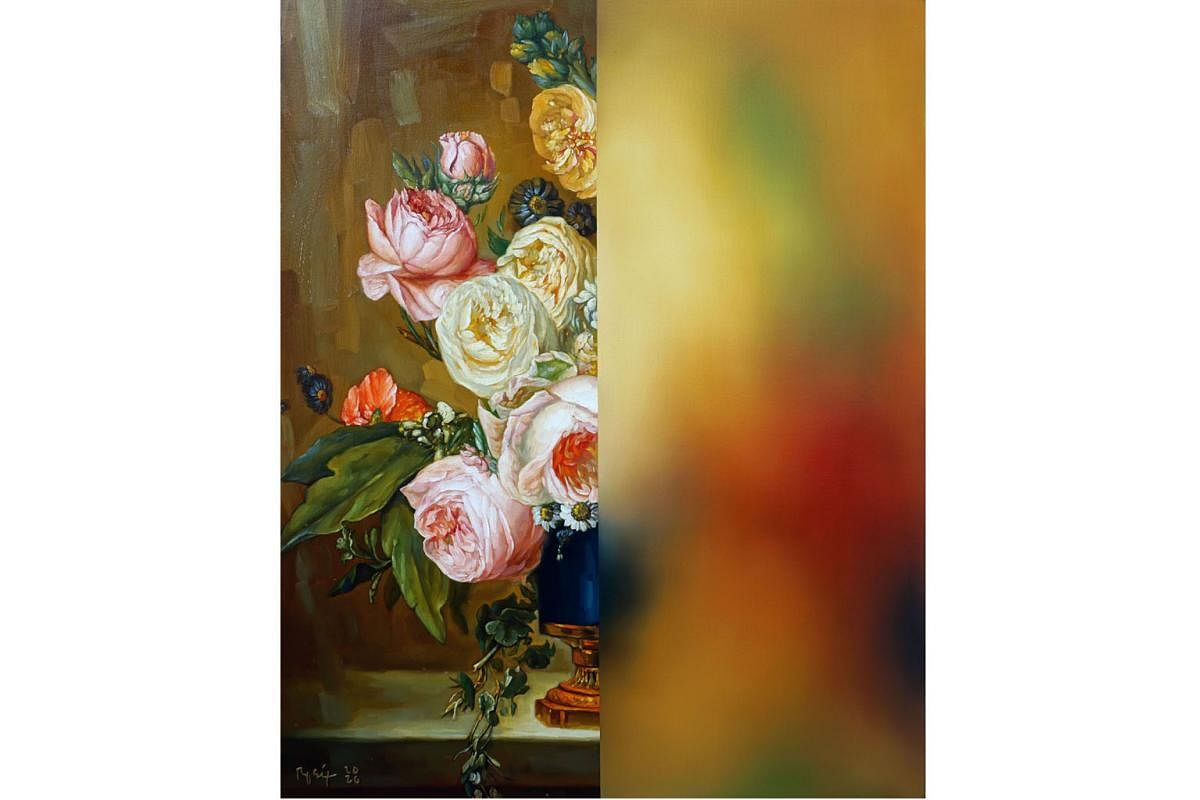COVID-19 SPECIAL
New art on the Web
With business hit by the Covid-19 pandemic in the first quarter of this year, art galleries take on the challenging times by launching new exhibitions online




Chan + Hori Contemporary announced last week it will be closing its gallery doors on June 30. The stalwart supporter of young artists is the first high-profile closure on the visual arts scene.
Small and mid-sized art galleries are struggling with plummeting sales amid the bleak economic outlook caused by the coronavirus.
The eight small and mid-sized galleries The Straits Times spoke to say business has fallen by between 50 and 80 per cent in the first quarter of this year.
STPI director Rita Targui, 50, says: "Although we've had some sales transactions taking place these past couple of weeks, the viewing and decision for purchase occurred before the circuit breaker took effect."
Gajah Gallery's director Jasdeep Sandhu, 52, says there are some bright spots for the gallery located at Tanjong Pagar Distripark.
"We recently managed to sell a Jason Lim work to the Minneapolis Institute of Art, and we're also having similar discussions to place seminal works by our artists in the permanent collections of institutions around South-east Asia."
But Fost Gallery founder Stephanie Fong, in her 40s, voices a common concern: "I do worry about the months that will follow."
Many galleries say they can tough it out for between three and six months.
Chan + Hori's closure comes as no surprise in an industry which cites rental and staff costs as the two major outlays. Chan + Hori and Fost are both located at arts enclave Gillman Barracks.
Chan + Hori's curatorial director and partner Khairuddin Hori, 46, says he and partner Angie Chan were already planning to restructure, and prefers to think of the closure as an evolution for the business. The coronavirus made the business environment harder for the traditional gallery format.
He adds: "A majority of our clients are not Singaporeans or based in Singapore, the restriction of travel has made it difficult for them. Also, given that businesses have pretty much taken a hit everywhere, the mood for buying art - with the exception of blue-chip, international brands - has understandably decreased."
Utterly Art's managing partner Pwee Keng Hock, 56, observes that the art market here has already been depressed for the past four to five years.
He notes that it is the large international galleries with deep pockets which can still sustain their businesses here. Even then, Pearl Lam Galleries, which moved from Gillman Barracks to Dempsey Hill in March 2019, quietly closed its doors late last year.
Mr Pwee adds: "Takings are not what they were like eight to 10 years ago. There has been a general migration of art interest from small/medium gallery exhibitions to larger fairs and events, which we've found necessary to participate in."
Utterly Art, located in Chinatown, is a fixture at the Affordable Art Fair. Participation in fairs involves additional rental and resource expenditure and, for overseas fairs, shipping and insurance costs. But such fairs and events have also been cancelled in the wake of the coronavirus lockdowns, reducing sales avenues for galleries and artists.
Other art galleries have taken steps to tackle the new challenges, mostly by going digital.
Fost and Gajah have both launched new online exhibitions.
Fost's Come Together, inspired by Singaporean photographer John Clang's work, features 12 artists who each chose a favourite work by another artist in the group.
Gajah's A Scanner Darkly features Indonesian artist Rosit Mulyadi's take on the art school practice of copying old masters as he remixes the images in a metaphor about self-presentation in a social media age.
Mr Sandhu is planning a video tour of the works in the Jakarta gallery and organising an online tour.
Chan + Hori also has an online show, Hier Encore: Collectables, featuring small works by a range of South-east Asian artists, each priced under $5,000.
STPI has created a series of fun digital activity kits which teaches both kids and adults about relief and collagraph printing techniques, and it will be launching Printmakers' Assembly, an online showcase of 65 works by 25 artists on May 21.
Mizuma Gallery at Gillman Barracks has produced a series of videos featuring artists talking about their practice.
Its gallery manager Theresia Irma, 35, says: "We hope that by having the information about the artworks published online, our audience will still be able to learn about the works and to build a better understanding of the artists' practice."
Artcommune is using the downtime to encourage its staff of seven to sign up for courses, ranging from a Sotheby's course about art appraisal to classes on art conservation.
Gallery director Ho Sou Ping, 48, is grateful for the recent $55 million Arts and Culture Resilience Package and other government support schemes which will help cover his staff and training costs.
The gallery, which recently moved from Bras Basah Complex to Carlton Hotel, is also getting rental rebates from its landlord, but he says: "I think we can last for another three months before we need another round of financing."
Galleries say the Jobs Support Scheme and Digitalisation Fund will help. But as Mr Khairuddin points out, "like many galleries here, we also have non-Singaporeans in our team, so help with salaries is limited".
A spokesman for the National Arts Council (NAC) says it is too early for the council to be able to share figures on applications and disbursement, but adds that applications are coming in at "quite a healthy rate". She adds: "It is still in its early days and we are encouraged by the response so far."
While institutional financial support is welcome, the galleries say what is more important is for art lovers to continue supporting artists' practice by buying work. Mr Khairuddin says: "For the long term, the scene does not require handouts, but the earnest support of local and local-based corporate patrons to sustain and survive."
Mulan Gallery in Armenian Street supports young local artists. Managing director Patricia Liang, 52, suggests that the Government could introduce a tax-deductible amount, up to $5,000 for example, for expenditure on Singapore artists. "Doing so will encourage more local support to the growing pool of Singaporean artists."
Although times are tough for everyone now, Mr Sandhu is choosing to see this enforced slowdown in a positive light.
"Who knows? In a year's time, this quiet, sabbatical period may produce some really good, unique art."
Join ST's Telegram channel and get the latest breaking news delivered to you.
A version of this article appeared in the print edition of The Straits Times on May 12, 2020, with the headline New art on the Web. Subscribe

